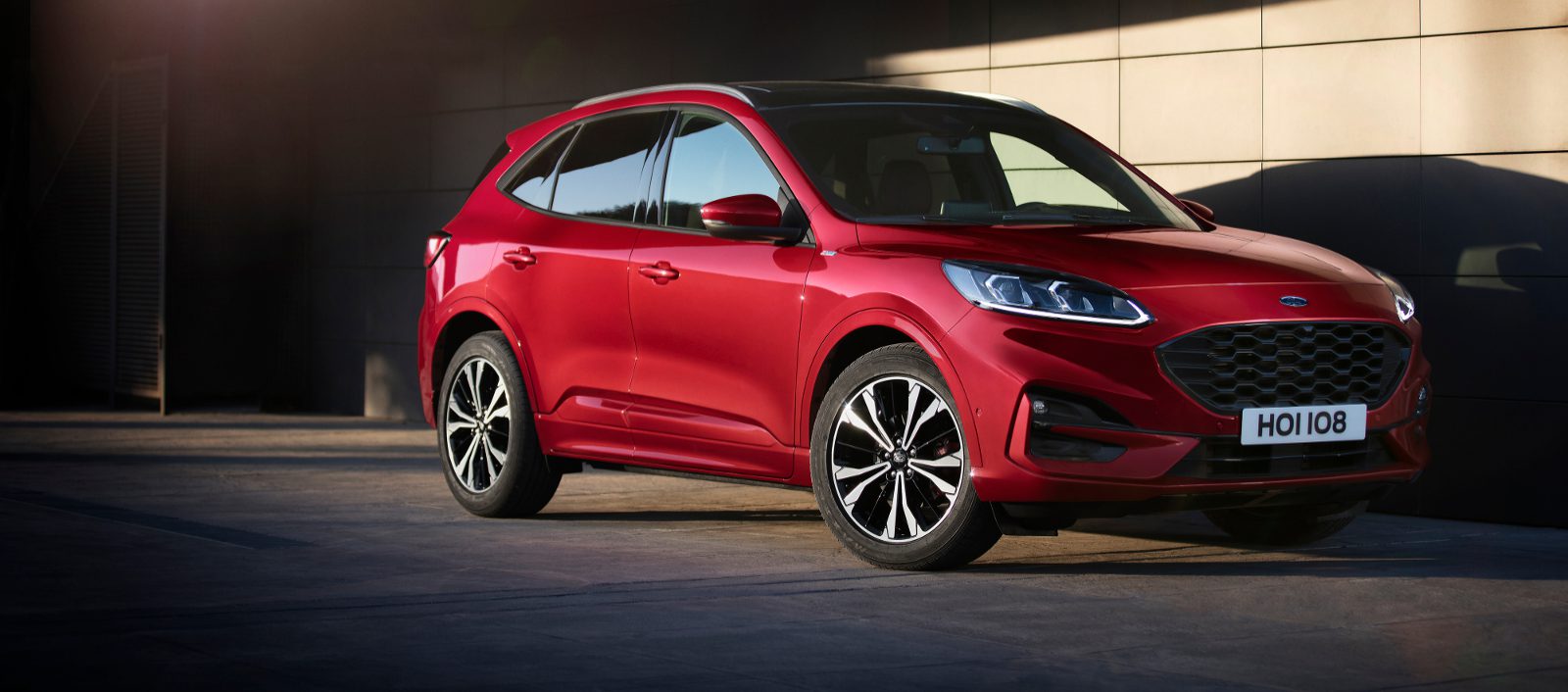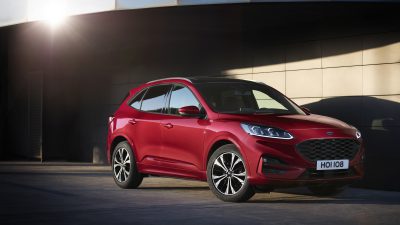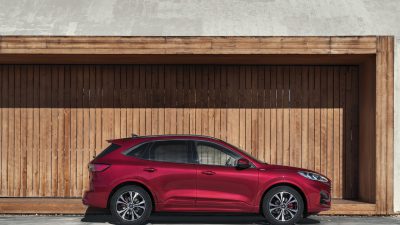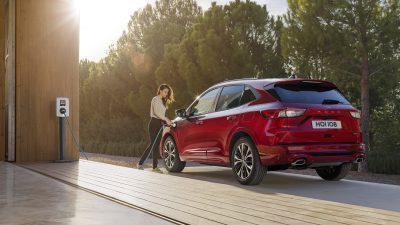- Kuga scoorde 92% voor bescherming van inzittende volwassenen
- Zeer sterk staal en intelligent ontwerp dragen bij aan bescherming
- Ford Co-Pilot360-technologieën helpen ongelukken voorkomen
De nieuwe Ford Kuga* SUV heeft het hoogst haalbare aantal van 5 sterren voor veiligheid toegekend gekregen van Euro NCAP, het onafhankelijke crashtestinstituut voor auto’s. De Kuga scoorde 92 procent voor bescherming van inzittende volwassenen en ontving de volle honderd procent voor de zijdelingse impactcrashtest en de zijdelingse paaltest. Lees verder
Downloads
Lees hieronder het bericht verder in het Engels:
Kuga’s structure utilises high-strength steel throughout the skeleton and intelligent designs to improve impact protection, including ultra-high-strength 3D-rolled steel tubes incorporated into each A-pillar and along the rooflines.
Additional Ford Co-Pilot360 technologies** designed to help Kuga drivers avoid accidents and distraction include:
- Ford’s Pre-Collision Assist with Pedestrian and Cyclist Detection technology, introducing new Intersection functionality for the first time in Europe that can automatically apply the brakes to avoid or mitigate the effects of accidents if the driver is turning across the path of oncoming traffic and the system determines an imminent collision
- Lane-Keeping System with Road Edge Detection, which supports the driver to safely guide the vehicle back into the correct lane or away from a soft verge, a gravel shoulder or grass at the side of a road by gently applying torque to the steering wheel
- Lane-Keeping System with Blind Spot Assist, which combines Ford’s Blind Spot Information System (BLIS) and Lane-Keeping System to monitor the driver’s blind spot for vehicles approaching from behind on multi-lane carriageways. If a driver either signals a lane change, or the control system senses a lane change when a vehicle is approaching in the blind spot, counter-steering is applied to warn the drive and discourage the manoeuvre, another first for Ford vehicles in Europe
- Cross Traffic Alert, which warns drivers reversing out of a parking space of vehicles that may soon be crossing behind them. The system can apply the brakes to avoid or mitigate the effects of collisions if drivers do not respond to warnings
- Evasive Steering Assist, designed to operate at city and motorway speeds and using radar and a camera to detect slower-moving and stationary vehicles ahead and provide steering support to enable drivers to manoeuvre around a vehicle if a collision is imminent
- Wrong Way Alert, which uses a windscreen mounted camera and information from the car’s navigation system to provide drivers with audible and visual warnings when driving through two “No Entry” signs on a motorway ramp
- Ford’s Adaptive Front Lighting System with predictive curve light and sign-based light, which pre-adjusts headlamp patterns for maximum visibility at curves, junctions or roundabouts
Should an accident occur, new Post-Collision Braking technology helps to reduce the impact of a potential secondary collision by automatically applying moderate brake pressure when an initial collision event is detected; slowing the vehicle can potentially lessen injury to occupants and further damage to the vehicle.
Child protection in the all-new Ford Kuga also was highly rated, receiving a score of 86 per cent. Last month, the all-new Ford Explorer Plug-In Hybrid*** seven-seat SUV also received the maximum 5-star safety rating from Euro NCAP, the first Ford electrified vehicle to do so under the new, more stringent protocols introduced last year.
# # #
*Euro NCAP 5-star rating applicable for Kuga 2.0-litre EcoBlue diesel (CO2 emissions from 127 g/km, fuel efficiency from 4.8 l/100 km NEDC), 1.5-litre EcoBlue diesel (CO2 emissions from 109 g/km, fuel efficiency from 4.2 l/100 km NEDC) and 1.5-litre EcoBoost petrol (CO2 emissions from 125 g/km, fuel efficiency from 5.5 l/100 km NEDC)
**Driver-assist features are supplemental to and do not replace the driver’s attention, judgement and need to control the vehicle
***Ford Explorer Plug-In Hybrid CO2 emissions from 66 g/km, fuel efficiency from 2.9 l/100 km NEDC
The declared fuel/energy consumptions, CO2 emissions and electric range are measured according to the technical requirements and specifications of the European Regulations (EC) 715/2007 as last amended. Fuel consumption and CO2 emissions are specified for a vehicle variant and not for a single car. The applied standard test procedure enables comparison between different vehicle types and different manufacturers. In addition to the fuel efficiency of a car, driving behaviour as well as other non-technical factors play a role in determining a car’s fuel/energy consumption, CO2 emissions and electric range. CO2 is the main greenhouse gas responsible for global warming.
Since 1 September 2017, certain new vehicles are being type-approved using the World Harmonised Light Vehicle Test Procedure (WLTP) according to (EU) 2017/1151 as last amended, which is a new, more realistic test procedure for measuring fuel consumption and CO2 emissions. Since 1 September 2018 the WLTP has begun replacing the New European Drive Cycle (NEDC), which is the outgoing test procedure. During NEDC Phase-out, WLTP fuel consumption and CO2 emissions are being correlated back to NEDC. There will be some variance to the previous fuel economy and emissions as some






